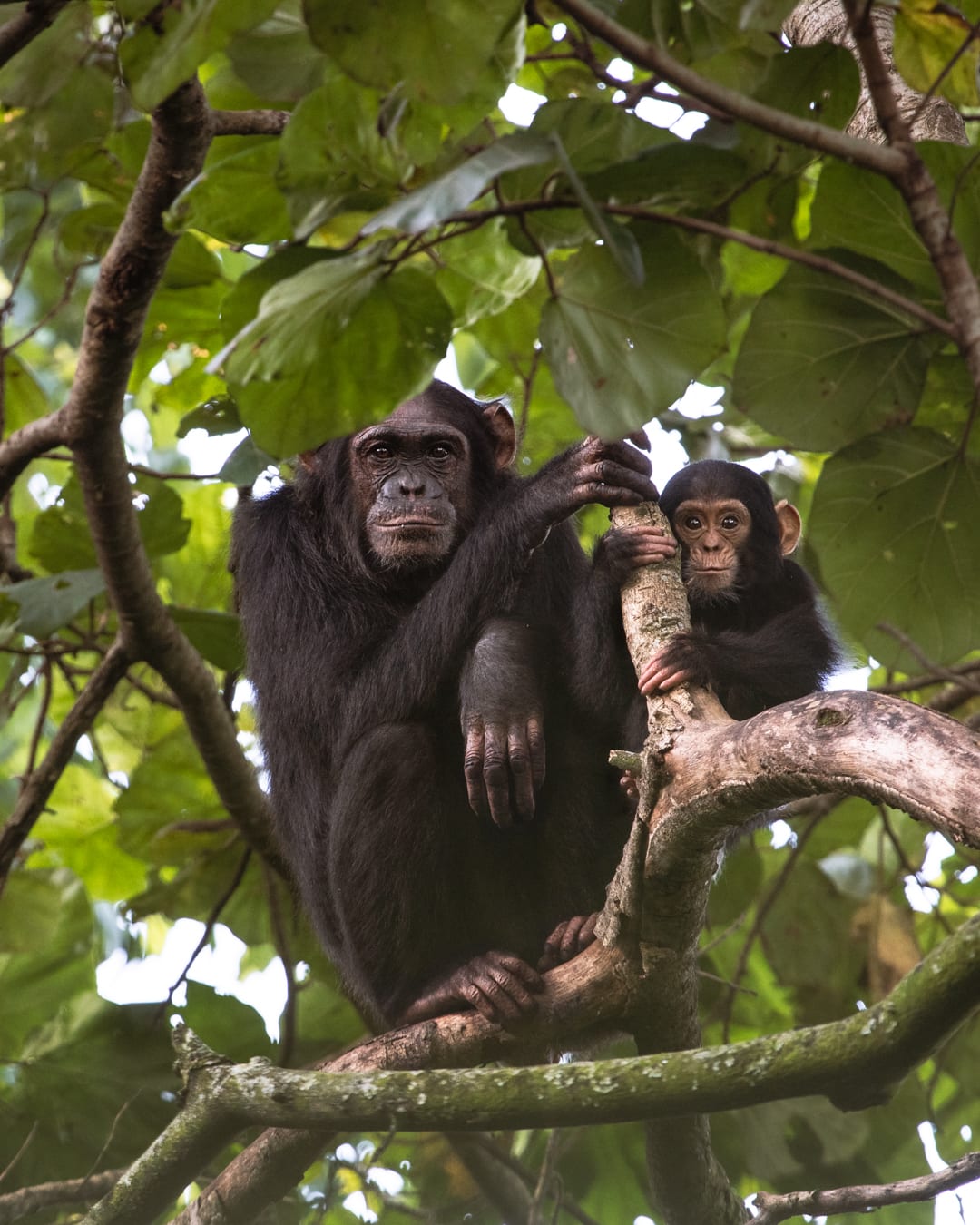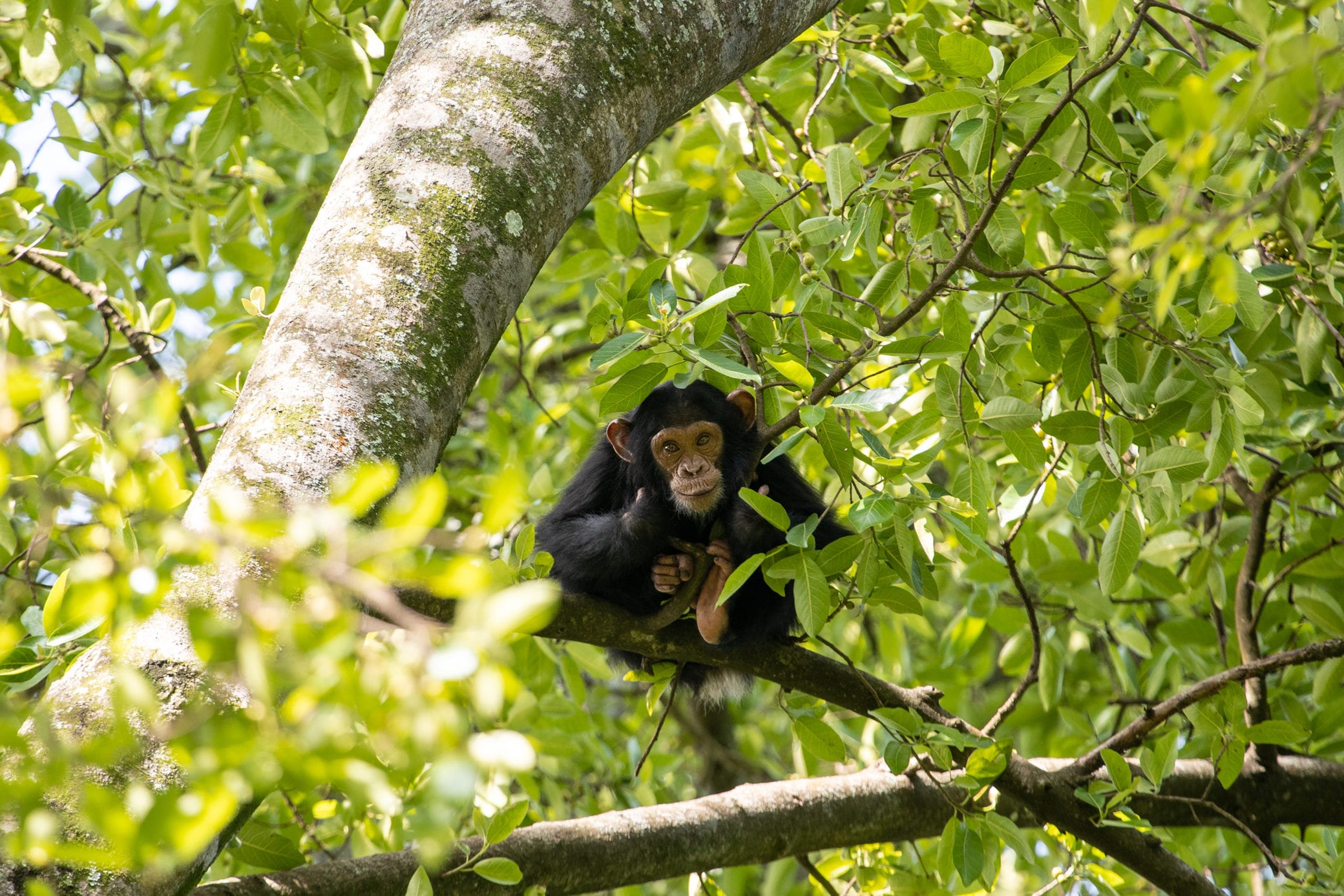- Chimpanzees can live to be 50 years old in the wild.
- The diet of the chimpanzee is very varied, comprising fruits, roots, nuts, leaves, plants, flowers, insects and a small amount of meat, normally derived from other primates which they occasionally hunt.
- As a highly intelligent primate species, chimpanzees communicate in a range of ways, including vocalizations, body language, facial expressions, hand-clapping, grooming and kissing.
- Chimpanzees are well known for their ability to make and use tools. This knowledge is passed down generation by generation.
- Being one of our closest cousins and sharing 99% of our DNA, chimpanzees are susceptible to many of the same diseases as humans.

Support Virunga this Giving Season >











